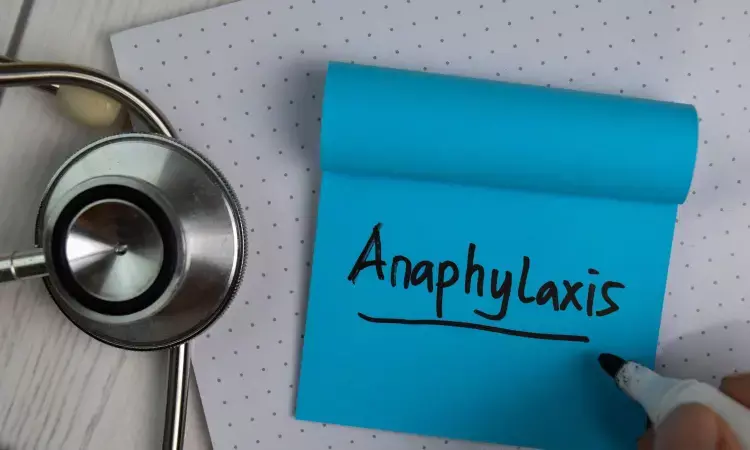- Home
- Medical news & Guidelines
- Anesthesiology
- Cardiology and CTVS
- Critical Care
- Dentistry
- Dermatology
- Diabetes and Endocrinology
- ENT
- Gastroenterology
- Medicine
- Nephrology
- Neurology
- Obstretics-Gynaecology
- Oncology
- Ophthalmology
- Orthopaedics
- Pediatrics-Neonatology
- Psychiatry
- Pulmonology
- Radiology
- Surgery
- Urology
- Laboratory Medicine
- Diet
- Nursing
- Paramedical
- Physiotherapy
- Health news
- Fact Check
- Bone Health Fact Check
- Brain Health Fact Check
- Cancer Related Fact Check
- Child Care Fact Check
- Dental and oral health fact check
- Diabetes and metabolic health fact check
- Diet and Nutrition Fact Check
- Eye and ENT Care Fact Check
- Fitness fact check
- Gut health fact check
- Heart health fact check
- Kidney health fact check
- Medical education fact check
- Men's health fact check
- Respiratory fact check
- Skin and hair care fact check
- Vaccine and Immunization fact check
- Women's health fact check
- AYUSH
- State News
- Andaman and Nicobar Islands
- Andhra Pradesh
- Arunachal Pradesh
- Assam
- Bihar
- Chandigarh
- Chattisgarh
- Dadra and Nagar Haveli
- Daman and Diu
- Delhi
- Goa
- Gujarat
- Haryana
- Himachal Pradesh
- Jammu & Kashmir
- Jharkhand
- Karnataka
- Kerala
- Ladakh
- Lakshadweep
- Madhya Pradesh
- Maharashtra
- Manipur
- Meghalaya
- Mizoram
- Nagaland
- Odisha
- Puducherry
- Punjab
- Rajasthan
- Sikkim
- Tamil Nadu
- Telangana
- Tripura
- Uttar Pradesh
- Uttrakhand
- West Bengal
- Medical Education
- Industry
Antibiotics Identified as Leading Cause of Anaphylaxis in Children in new study

A new study published in the European Journal of Pediatrics showed that antibiotics, particularly ceftriaxone, were the most commonly related to anaphylactic reactions in children. This highlights the need for heightened awareness and careful monitoring when prescribing antibiotics to pediatric patients.
Drugs are the most common etiological agents in deadly anaphylaxis in most areas where data is available. Data on drug-induced anaphylaxis in children are sparse, with most case studies including adult populations. Azize Pınar Metbulut and crew conducted this study to understand demographics, clinical manifestations, risk factors, causative agents, and therapy options for drug-related anaphylaxis in the pediatric population.
Pediatric patients between the ages of 1 month and 18 months, who were admitted to the Pediatric Allergy and Immunology outpatient clinics of 11 participating centers between January 2017 and December 2022 with a presumptive diagnosis of drug-induced anaphylaxis and who met the standard criteria for anaphylaxis were included in this multicenter retrospective study.
A total of 293 anaphylactic incidents that occurred in 265 individuals were included, of which 48.1% (n 141) were female. During the index event, the median age of the patients was 107 months. When compared to home surroundings, hospital settings had a higher rate of anaphylaxis. In 40.3% of the instances, the administration was peroral, and in 59.7%, it was parenteral.
The most often suspected medication classes were antibiotics, non-steroidal anti-inflammatory medicines, and chemotherapeutics; nevertheless, the most prevalent culprits among antibiotics were the cephalosporin group, particularly ceftriaxone. 39.6% of the events had severe anaphylaxis, whereas 54.9% had mild anaphylaxis.
5 of the patients experienced a biphasic response. Adrenaline therapy was administered to only 72% of patients. A total of 39 individuals were confirmed by diagnostic tests, comprising skin prick, intradermal, and drug provocation tests, conducted between 1 and 120 months following the index response.
The results showed positive results in 23.4%, 17.2%, and 20.3% of instances, respectively. Protocols for possible drug desensitization were performed on four individuals. Overall, algorithmic assessment is necessary for pediatric patients suffering from drug-related anaphylaxis in order to guarantee a precise diagnosis, stop recurrence, and find safe substitute therapies.
Source:
Metbulut, A. P., Haci, İ. A., Can, D., Bekiş Bozkurt, H., Cavkaytar, Ö., Arga, M., Özçeker, D., Kavas Yildiz, Y., Vezir, E., Arikoğlu, T., Kuyucu, S., Azkur, D., Güvenir, H., Kendirci, N., Orhan, F., Usta Güç, B., Bahçeci, S., & Dibek Misirlioğlu, E. (2025). Evaluation of drug-related anaphylaxis in children: multi-center study. European Journal of Pediatrics, 184(3), 230. https://doi.org/10.1007/s00431-025-06068-x
Neuroscience Masters graduate
Jacinthlyn Sylvia, a Neuroscience Master's graduate from Chennai has worked extensively in deciphering the neurobiology of cognition and motor control in aging. She also has spread-out exposure to Neurosurgery from her Bachelor’s. She is currently involved in active Neuro-Oncology research. She is an upcoming neuroscientist with a fiery passion for writing. Her news cover at Medical Dialogues feature recent discoveries and updates from the healthcare and biomedical research fields. She can be reached at editorial@medicaldialogues.in
Dr Kamal Kant Kohli-MBBS, DTCD- a chest specialist with more than 30 years of practice and a flair for writing clinical articles, Dr Kamal Kant Kohli joined Medical Dialogues as a Chief Editor of Medical News. Besides writing articles, as an editor, he proofreads and verifies all the medical content published on Medical Dialogues including those coming from journals, studies,medical conferences,guidelines etc. Email: drkohli@medicaldialogues.in. Contact no. 011-43720751


